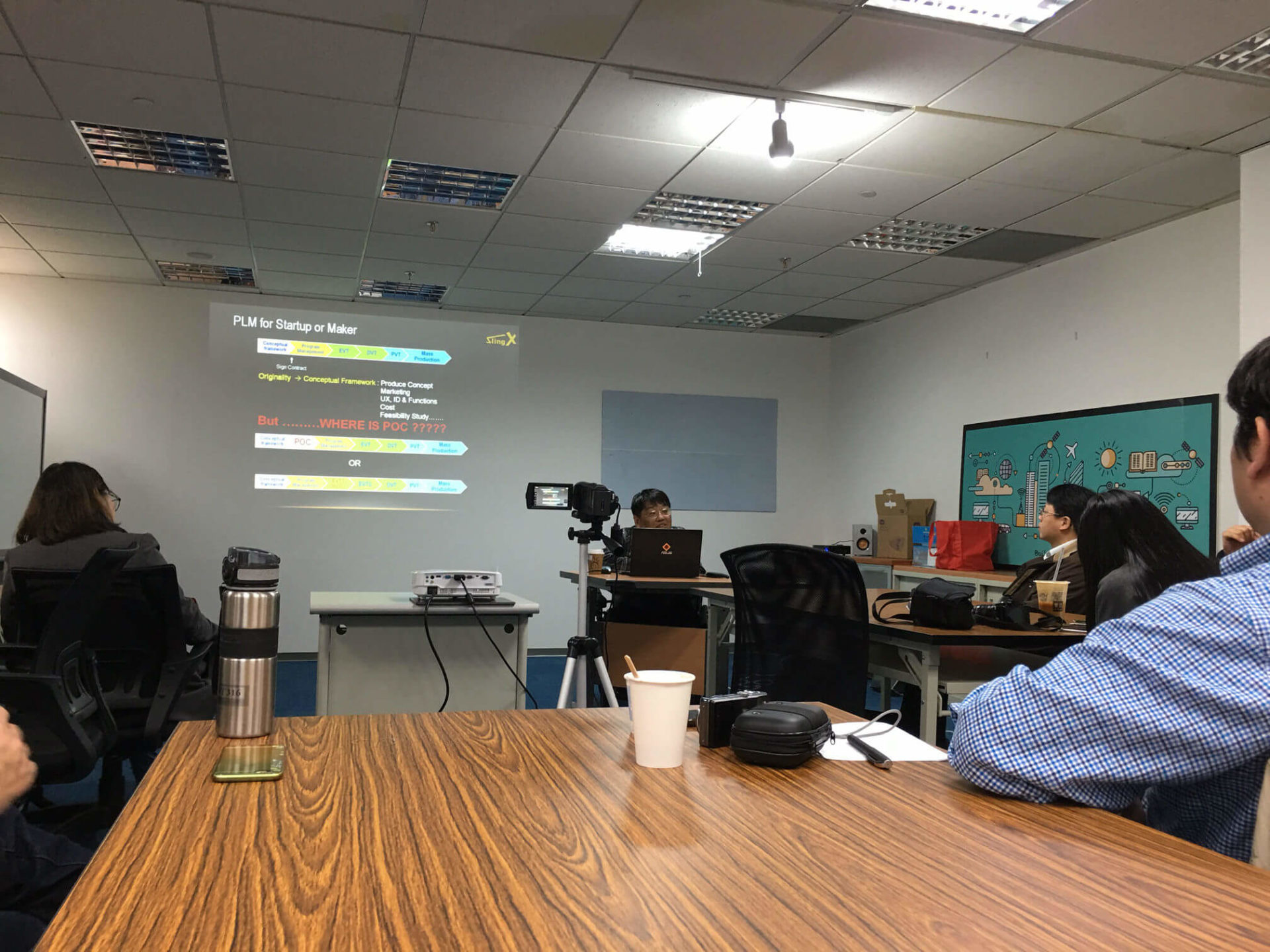PLM and TechDesign Part 1: PLM for Startups and Individual Makers

If you still remember, TechDesign wrote a series of posts about how our platform, TechDesign.com, can redefine the whole electronic development process in a smarter way. Our team has been working hard on the platform itself and we have also been participating in different seminars on related topics. In order to help us understand how can we better serve the electronics community, TechDesign finds it necessary to keep our knowledge up to date and at the same time, continue to engage with the community on these occasions. So on March 23, our team attended an enlightening seminar “PLM Design Process for Startup or Maker” held by MakerPro in Taipei. Below is some of TechDesign‘s takeaway.
PLM (Product Lifecycle Managment) for startups and makers
In order to refresh our ideas of PLM, the keynote speaker, David Peng, explained the typical PLM process in EMS (electronics manufacturing service.) From Pre-Kickoff to RMA, the cycle can be divided into 7 phases, and as the process proceeds, different types of players will be involved. For products of different natures, the process will also be adjusted. Since there are major differences in the budget and product quantity between startups and big corporations, project schedule and cost are the most important aspects for startups. With limited resources, startups and individual makers need to be smart with their project scheduling and budgeting to get the maximum profit in return.
Peng emphasized that resource, cost and schedule are three main factors that will influence a project. For Startups and individual makers, originality is very important. They need to retain spontaneity in order to succeed in product lifecycle management. As for the difference in PLM processes, startups usually begin their projects with conceptual framework instead of the typical sales marketing. Concept framework includes the following tasks: product concept, marketing, user experience, ID and functions, cost and feasibility studies.
In case you wonder where will POC (proof of concept) be conducted for startups and individual makers, it really depends on the nature of their products. For some, the step will be taken in between conceptual framework and program management. For others, POC will be merged with engineering verification test. However, Peng reminded all participants that the key to determining success for startups and makers actually lies in the pre-kickoff period. Startups need to put the following three factors into consideration: applicability of their products, target audience, and cost-performance ratio. Last but not the least, there is one minor aspect that Peng wants startups and makers to keep in mind. During the EVT phase, startups should pay attention to layouts of their prototypes.
To yield more time for Q and A, Peng decided to continue the rest of the speech until the next seminar. As one of the startups at the scene, TechDesign finds the information very helpful for startups and individual makers who may have previously been confused about how to divide their resources. If you want to learn about the details of the seminar, you can check out the powerpoint slides here. In order to help you all have a better understanding of how TechDesign can be a key player in the PLM process for startups and individual makers, we decide to use Part 2 of the series to walk you all through, so stay tuned. If you have any questions or suggestions, please don’t hesitate to leave them in the comments as always.












Thanks for joining our speech and the report!
Owen Ou, MakerPRO co-founder